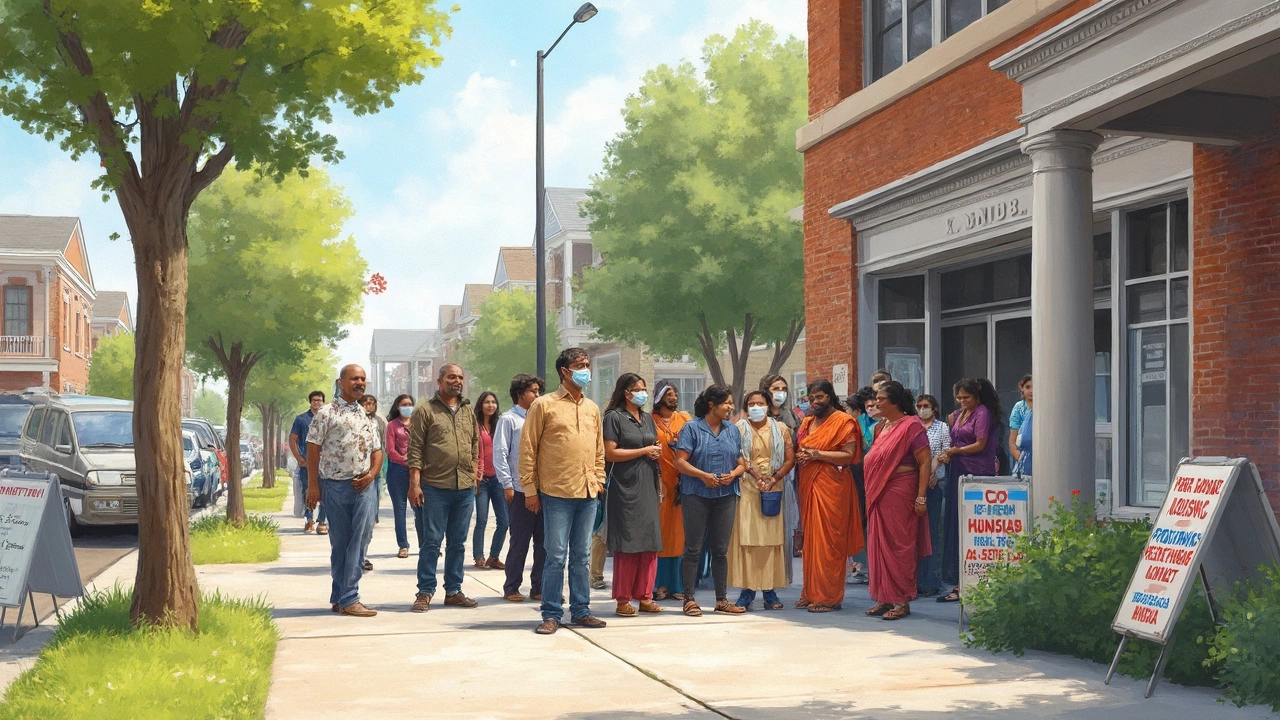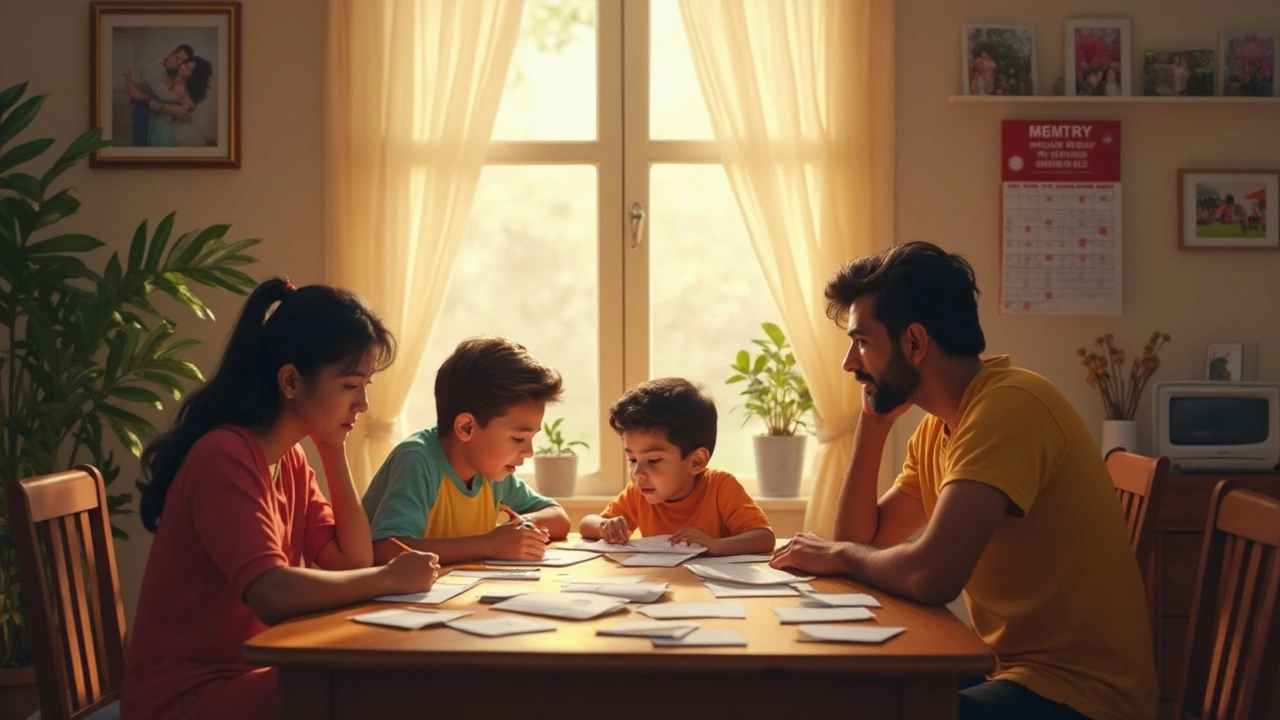Staying on top of rent in Virginia isn’t getting any easier, and a lot of people are still guessing if help is even out there now. Rental assistance hasn’t totally disappeared in VA, but it works a bit differently than it did during the height of the pandemic. Way fewer federal dollars are funneling into local programs, but some funds and resources are still kicking—if you know where to look.
Don’t write off help just because you’ve missed headlines about “emergency” programs ending. Some statewide and local support is quietly open for applications, and the criteria aren’t always as strict as you’d think. Knowing the right places to check could mean the difference between scrambling for rent or getting that crucial boost that keeps you in your home.
- What Rental Assistance Exists Today?
- Who Is Eligible and How to Apply
- State and Local Programs Worth Checking
- Tips for Speeding Up the Process
- What to Do If You’re Still Stuck
What Rental Assistance Exists Today?
If you live in Virginia, rental assistance hasn’t disappeared, but you won’t see the same flood of cash from federal COVID relief. The big deals now are state and local programs. The Virginia Rent Relief Program (RRP) is closed to new applicants as of mid-2023, but don’t tap out yet—help is still out there, just under different names and setups.
Most active help is coming from local social services, nonprofit agencies, and a couple of special housing organizations. Cities like Richmond, Virginia Beach, and Norfolk have their own programs with different rules. For example, some counties partner with nonprofits like Housing Opportunities Made Equal (HOME) or Virginia Housing to help people behind on rent. Some programs will pay part of your back rent, while others might help with deposit or utility bills if that’s what’s tripping you up.
Here’s a quick look at the main types of assistance still available in 2025:
- Local Emergency Programs: Many counties and cities have their own emergency rental assistance. Check your local Department of Social Services or the city’s official website for details.
- Nonprofit Funds: Groups like HOME, the Salvation Army, and Catholic Charities have funding set aside for people in housing trouble.
- Housing Choice Vouchers: These are run by local housing authorities. Waitlists can be long, but it’s worth getting your name in as soon as possible.
- Short-Term State Help: Some temporary state programs pop up as budgets allow. Keep an eye out for grants or pilot projects run by the Virginia Department of Housing and Community Development.
For folks who prefer numbers, here’s what’s been happening the past year in VA:
| Assistance Type | # Households Helped (2024-2025) | Average Payment ($) |
|---|---|---|
| Local emergency funds | 8,200 | 1,500 |
| Nonprofit rental assistance | 3,900 | 1,250 |
| Housing Choice Vouchers issued | 2,100 | 700/month |
Bottom line: You still have options, but each area plays by its own rules, and the sooner you reach out, the better your shot at getting help before funds dry up. Don’t assume you’re not eligible—lots of spots are now open for people with steady jobs who are just one rough spot away from missing rent.
Who Is Eligible and How to Apply
Wondering if you actually qualify for rental assistance in Virginia? It’s not rocket science, but there are a few things you need to check before jumping in. Most programs look at three big factors: your household income, your current housing situation, and your risk of losing your home. If you’re renting and your income isn’t higher than 50%-80% of your county’s median, there’s a solid chance you’re eligible. To make it easier, here’s a breakdown of typical requirements and how local rules may stack up at a glance:
| Requirement | Details |
|---|---|
| Household Income | Usually less than 80% of Area Median Income (AMI); many programs focus on 50% AMI or below. |
| Residency | Must be living in Virginia and able to show a lease or rental agreement. |
| Financial Hardship | Proof of reduced income, job loss, unexpected bills, or high rent burden. |
| Housing Instability | Facing eviction, in danger of becoming homeless, or behind on rent. |
Not sure where you stand with income? The U.S. Department of Housing and Urban Development (HUD) updates VA county numbers every year. For example, in 2025, a family of four in Richmond County needs to earn less than $65,400 to be under 80% AMI. Smaller counties have different cutoffs, so check those numbers before you apply.
Application isn’t as painful as it used to be. Most programs want proof of income, a current lease, documents showing what you owe (like overdue rent statements), and an ID. Some programs will even help you gather the paperwork or walk you through the forms online or in person. Here’s how to get started:
- Find local programs on the Virginia Department of Housing and Community Development (DHCD) website or 211 Virginia.
- Gather your pay stubs, lease, ID, and any eviction or overdue rent notices.
- If your landlord is involved in the process, things move quicker—ask them to join the application if possible.
- Complete the online form or visit a community agency for help in person (libraries often have staff who know the drill).
- Keep a copy of everything you submit and double-check your contact info so you don’t miss a response.
If you run into any snags or there’s a waitlist, don’t give up. You might qualify for other utility or emergency assistance while you wait for the main rental help. Every little bit adds up when you’re trying to hold onto your place.

State and Local Programs Worth Checking
So here’s the thing—while federal programs like the big Emergency Rental Assistance (ERA) winds blew through already, some state and local groups in Virginia picked up the slack. You’ve still got options if you know where to dig.
The rental assistance programs that stick around in VA now are usually run by the state Department of Housing and Community Development (DHCD) and a few big nonprofits. For example, the Virginia Rent Relief Program (RRP) ended last year, but DHCD still works with local partners to help in emergencies, especially if you have an eviction notice.
Here are some spots people in Virginia can turn to right now:
- Virginia Eviction Reduction Pilot (VERP): Still active in some cities. Covers overdue rent and sometimes utilities if you’re at risk of losing housing. Not every county participates, so you’ll need to check their list.
- Local Housing Authorities: Almost every county and big city—Richmond, Fairfax, Virginia Beach—has an office helping folks apply for local aid, waitlists for vouchers, and sometimes direct landlord negotiations.
- Nonprofit Assistance: Groups like Housing Opportunities Made Equal (HOME) and local United Way chapters give grants, case management, or point you to short-term loans for rent. YWCA and Salvation Army chapters in some parts of VA have special funds for women and families facing eviction.
- 211 Virginia: This free hotline and website connects you instantly to whatever local rent or utility help is available by zip code. Staff have the latest info when websites lag.
Here’s a quick snapshot of who’s offering what as of mid-2025:
| Program/Resource | Type of Help | Where to Apply |
|---|---|---|
| VERP | Rental, utility, legal aid | Regional partners, mostly in larger counties |
| Local Housing Authorities | Vouchers, application help, hardship waivers | City or county housing office |
| HOME (Richmond, Norfolk) | Grants, mediation | Direct via organization’s website or office |
| United Way | One-time grants | 211 or local office |
One big tip: always double-check the official application windows. Some programs open new funding in waves or only accept applications when extra money comes in. And keep copies of your lease, pay stubs, and any eviction paperwork handy. Most places will fast-track you if you show proof you’re about to lose your home.
Tips for Speeding Up the Process
If you're racing against the clock on rent, here's how to hustle your rental assistance application through the system in Virginia. It helps to be organized and know exactly what the programs expect from you before you even start.
The rental assistance offices and online programs get swamped, especially at the start and end of every month. Missing paperwork or tiny errors slow things down, sometimes by weeks. Here’s what actually saves time:
- Gather documents first: Landlord contact info, recent pay stubs, lease copy, and proof of crisis (like a late notice or medical bill) are almost always required. It’s a pain if you have to stop and find these later.
- Double check your contact info: Typos in your phone number or email can stall everything—most rejections happen because the caseworker can’t reach you.
- Apply online when you can: Most local governments and nonprofits like Virginia Housing or 211 Virginia have online portals. These move faster than paper or mail-in forms.
- Go local: County or city programs (especially in places like Fairfax, Richmond, or Norfolk) can process forms faster than statewide ones. Call the rental assistance phone numbers for your city, not just statewide hotlines.
- Follow up—politely but often: If you haven’t gotten a follow-up or approval within a week, call the office. Keeping your name on their radar helps, especially with smaller agencies.
For proof, just look at how quickly programs process well-prepped files:
| Document Ready | Average Processing Time |
|---|---|
| All Docs Submitted First Try | 1–2 weeks |
| Missing/Incorrect Docs | 3–5 weeks |
Speed matters most when you’re close to an eviction date. If you’re panicked, ask your local program if they can provide an "emergency payment letter"—sometimes just proof that help is coming will get your landlord off your back for a bit. And one more thing: check your spam folder. A lot of people miss approval emails because they land in spam.

What to Do If You’re Still Stuck
So, you’ve checked into every rental assistance program and still can’t cover your rent. That’s not the end of the road. Plenty of Virginians are in the same boat right now, with rent prices about 18% higher than before 2020, according to the Virginia Housing Alliance. If the usual programs have run out of funds or you’re not eligible, here’s what actually works next.
- Talk to Your Landlord: It might sound basic, but plenty of landlords would rather work out a payment plan than risk having an empty unit. Ask about splitting payments, reducing rent short-term, or even swapping some services if you’ve got useful skills.
- Try Local Nonprofits: Some nonprofits and churches offer small emergency grants or cover your power bill, freeing up money for rent. Check housing offices, United Way branches, and groups like Commonwealth Catholic Charities.
- Apply for Utility and Food Help: If you can lower other bills, that frees cash for your rent. Dominion Energy’s EnergyShare, local food banks, and Virginia’s SNAP program can offer quick breathing room.
- Don’t Ignore Legal Aid: Virginia Legal Aid can help if you’re facing eviction. Sometimes just having legal support gets landlords to negotiate and gives you time to figure things out.
- Talk to Your County or City: Some cities (like Fairfax and Richmond) still have local emergency housing bucks set aside. These are separate from the big state pools and can be easier to access.
If you’re not sure where to start, dial 2-1-1 Virginia to get a live person who can talk you through what’s actually available in your zip code.
| Resource | Type of Help | How to Access |
|---|---|---|
| Virginia Legal Aid | Eviction/fair housing legal support | valegalaid.org or call local office |
| 2-1-1 Virginia | Referrals to rent, utility, and food help | Dial 2-1-1 (statewide hotline) |
| Commonwealth Catholic Charities | Limited emergency rental aid | cccofva.org/apply |
| Local United Way | Emergency money, food help | Search "United Way" + your city |
| Local City/County Housing Office | Local emergency rental funds | Find your city/county’s site or call City Hall |
If it’s getting close to eviction, rental assistance isn’t your only line of defense. Make sure you keep every notice or letter from your landlord—having a paper trail can be crucial in court or when asking for help. And don’t be afraid to reach out to multiple places at once. Most folks who found help in the past year tapped more than one resource, according to the Virginia Department of Housing. It takes energy, but it can keep a roof over your head.

